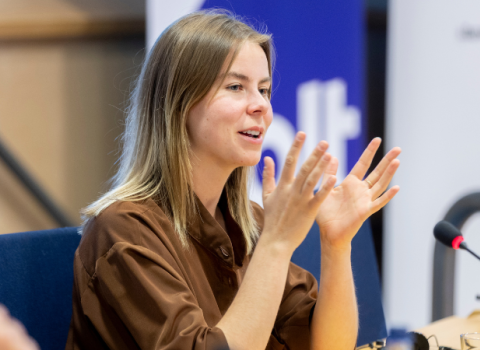Anca Banita’s idea was simple: to create an app which could alert people to illegally dumped rubbish.
Her inspiration was the ‘Let’s do it’ movement, which started in Estonia in 2008 when 50,000 volunteers cleaned up the entire country in just five hours.
Since then, 112 countries and an estimated 13.8 million people have joined the campaign to clean up illegal waste.
When the movement came to Romania, Banita signed on as spokeswoman, becoming the group’s public face. A pilot in August 2015 drew a staggering one million volunteers. As a result, “93 per cent of the trash sites were cleaned,” reports Banita.
The next step was to follow the route which has been a game changer for many start-ups and social enterprises: a crowdfunding campaign. For a fledgling product, a good campaign can open up access to a seed round to support the formation of a company.
Banita started the ‘Swipe away illegal waste!’ campaign, with the goal of raising $36,000.
The money would go towards developing an app to allow users to upload pictures of refuse in their areas, which would be geotagged.
The initial success in the pilot raised expectations of a triumphant run at crowdfunding. Banita’s team received media attention in Romania and made leaflets and a video. She hoped the app could become the official app for the global ‘Let’s do it’ movement.
Escaping ignominy
To raise $36,000, “We needed 3,600 people to give us $10: it sounded easy,” said Banita. “So what could go wrong?” Well, plenty. “I immediately said yes to the plan. This was my first mistake; never say yes until you know what you are getting into,” she said.
Crowdfunding wisdom holds that campaigns need to raise a third of their target in the first two days. But after a month ‘Swipe away illegal waste’ had only managed to scrape together $3,072 from 208 backers.
Although the campaign escaped the ignominy of going totally unfunded, hitting just 8 per cent of its target was salutary, admits Banita.
“I’d never once screwed up in 27 years. I felt ashamed. I was the face of the campaign – I was everywhere in the media,” she said. “For the whole month, I wanted to disappear. It was a big mark on my image.”
Lessons of failure: plan before executing
“If I could do it differently, I’d plan better” Banita said. “Don’t start anything until you have a clear plan. You can’t make improvements once you’ve started. You have to do a lot of work offline in advance, talk to people, get supporters.”
In other words, “You need a campaign before the campaign.”
Another defect was the lack of basic market research. “Crowdfunding in Romania is not that popular. We had to explain what it was to a lot of people, and fight a lot of mistrust,” Banita said.
In hindsight, the proposed app was not a fit with this type of fundraising. “Crowdfunding works for campaigns with concrete, urgent benefits. We were asking for something a bit more intangible,” said Banita. “Our pitch wasn’t simple: you really need something simple to be a success in crowdfunding.”
As it happens the development of the app was funded anyway, with the help of corporate sponsors.
As bad as it may have felt at the time, Banita’s story is not so uncommon. Like many crowdfunding campaigns, things did not go to plan. One platform IndieGogo expects nine out of 10 to fail.
The episode taught Banita to go easier on herself. “Before the campaign, we were such an inspiration for everyone. I thought everyone would be disappointed when we failed. But they weren’t, and the feeling passed. I learned not to take things [so] seriously.”
“I can accept now that I can screw up from time to time; I can fight the motivation to disappear.”
Banita told this story recently at an event in Brussels dedicated to professional failure, hosted by antiheroes, a Belgian consultancy



 A unique international forum for public research organisations and companies to connect their external engagement with strategic interests around their R&D system.
A unique international forum for public research organisations and companies to connect their external engagement with strategic interests around their R&D system.